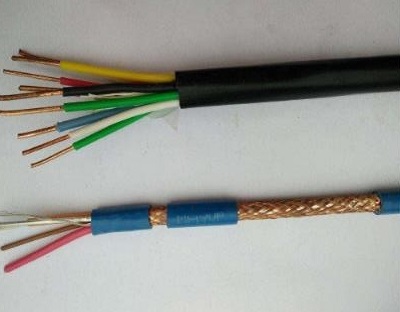



Úsáideann cáblaí armúrtha téip cruach nó téip alúmanaim chun airíonna meicniúla an chábla a neartú ionas gur féidir leis an gcábla brú meicniúil seachtrach a sheasamh. Déantar an cábla sciatha a chosaint le téip chopair nó le sreang chopair braided chun cur isteach ar réimse leictreamaighnéadach a leithlisiú.
Cábla claonta miotail agus cáblaí armúr i measc na gcáblaí is mearbhall ar an margadh. Is é an chúis atá leis sin i dtéarmaí tógála, Tá na cáblaí seo níos mó nó níos lú agus tá armúr ag an mbeirt acu. Baineann an príomhdhifríocht idir an dá chábla i ndáiríre le bunús, ní armúr. Sula ndírítear ar an difríocht bheag seo, Déanaimis tumadh isteach i ról armúr i gcáblaí armúrtha.
Tá an armúr déanta as miotal sa chábla armúrtha, cosúil le cruach, copar, nó alúmanam. Is é cuspóir an armúr cosaint fhisiciúil an chábla a sholáthar ón gcomhshaol. Cosnaíonn sé an téad cumhachta go príomha ó dhamáiste fisiciúil. Dá bhrí sin, Ní úsáidtear sreanga armúrtha ach i dtimpeallachtaí ina bhfuil meicniúil féadfaidh damáiste tarlú.
Ó thaobh an bhuiséid, Is é an buntáiste is mó a bhaineann le cáblaí DC agus AC thar cháblaí cuspóir ginearálta gan armúr ná an coigilteas i gcostais seoladáin. Ós rud é go soláthraíonn an armúr an chosaint a chuirfeadh seoladáin ar fáil, Ní gá duit airgead breise a chaitheamh air.
Cé go bhfuil leibhéal áirithe mífhaisnéise ar an ábhar ar líne, Ní chosnaíonn cáblaí armúrtha cáblaí ón aimsir, ceimiceáin, agus uisce. Go deimhin, Tá sreanga armúrtha so -ghabhálach do chreimeadh. Más mian leat cábla armúrtha a úsáid in áiteanna fliucha, Beidh cábla de dhíth ort le seaicéad breise PVC, suiteáilte go speisialta le haghaidh suíomhanna fliucha.
Is é an príomhdhifríocht idir sreanga AC agus DC ná go bhfuil sreang talún caighdeánach ag cáblaí claonta miotail, Cé go mbraitheann cáblaí AC ar seaicéad in éineacht le sreang nó stiall chun talamh a chinntiú. Is féidir armúr miotail a úsáid freisin le sreanga bannaí mar chuid de thalamh an domhain. I gcáblaí de chineál DC, Níl an armúr mar chuid den talamh.
Difríocht eile idir cáblaí DC agus AC ná go n -úsáidtear cáblaí AC taobh istigh agus nach bhfuil siad oiriúnach le haghaidh áiteanna fliucha agus tais. Is é an chúis atá leis ná nach bhfuil seaicéad PVC ag an gcábla AC. Is seaicéad PVC é a fhágann go bhfuil an cábla DC oiriúnach do shuíomhanna lasmuigh. Murab ionann agus DC, Níl cáblaí AC oiriúnach le haghaidh adhlacadh díreach.
Fada sular tugadh DC isteach, Ba iad cáblaí AC an cineál cábla armúrtha is mó ar an margadh. Bhí siad le feiceáil sa NEC Cód Leictreach Náisiúnta chomh luath agus a bhí 1903. Inniu, cén dóigh faoin spéir a ...?, Is rogha níos solúbtha agus níos nua -aimseartha iad cáblaí DC.
Má theastaíonn cáblaí armúrtha uait taobh istigh, Is féidir le cáblaí AC freastal ar do chuid riachtanas. Ag Cábla VERI, Is féidir leat gach cineál cáblaí AC agus DC a fháil de chaighdeán nach bhfacthas riamh roimhe ag na praghsanna is fearr sa tionscal.
——Veri
As telecommunication networks and power transmission systems grow rapidly, the demand for reliable and cost-effective…
In large-scale oil and gas projects, industrial cables are not just accessories—they are the "nervous…
In the world of electrical connections, cable lugs—also known as cable ears or cable terminals—a bheidh…
When choosing the right rubber cable for an electrical engineering project, it is critical to…
Comhpháirtithe agus custaiméirí a chara: 29 Eanáir, 2025 Is í an Bhliain Nua Lunar na Síne – Spring…
Is comhpháirt bhunúsach é sreang chopair i saol na hinnealtóireachta leictreachais agus na leictreonaic, valued…